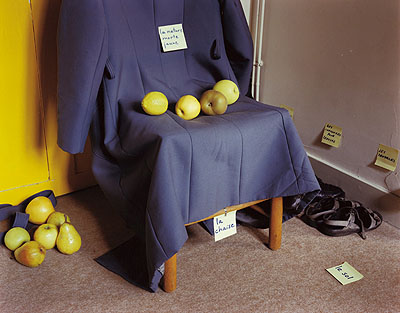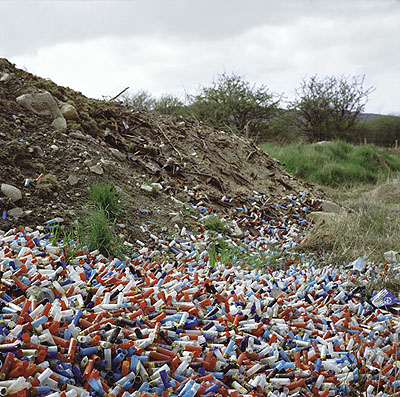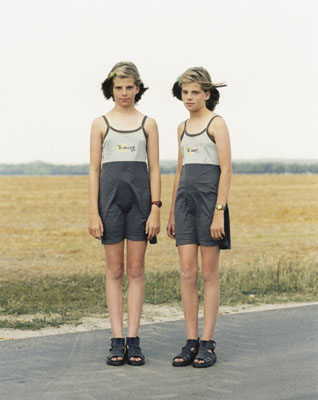
De L'Europe - Photographies Essais Histoires
Gábor Ösz » Johannes Backes » Eva Bertram » Elina Brotherus » Thomas Chable » Patrizia Di Fiore » Véronique Ellena » Joakim Eskildsen » Moreno Gentili » Claudio Gobbi » Lori Grinker » Anthony Haughey » Rip Hopkins » Jean-François Joly » Pelle Kronestedt » Nicoletta Leonardi » Gilles Mora » Cristina Nuñez » Gilles Peress » Mark Power » Anne Rearick » Victor Sira » Alexey Titarenko » Albrecht Tübke » Ad van Denderen » Ute Wrocklage » Marco Zanta » Thomas Zika »
Exhibition: 23 May – 19 Aug 2007
CNA Centre National de l'Audiovisuel
Aciérie (Steelworks)
3598 Dudelange
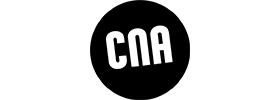
CNA Centre national de l'audiovisuel
1b, rue du Centenaire
3475 Dudelange
+352-522424-1
Wed-Sun 12-18
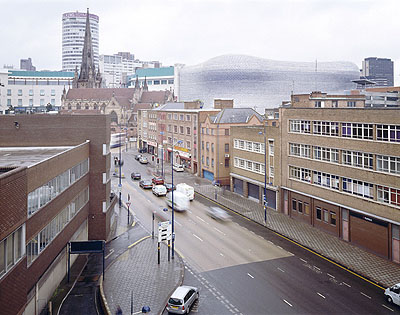
As of 24 May, the striking and monumental site of the Dudelange steelworks is playing host to a gathering of 25 photographers. For the occasion, this industrial site has been redesigned as an exhibition space, while maintaining its original dimension and character. The scale of the event is striking, featuring over two hundred works suspended from picture rails. The set and lighting have been designed by Albert Vallverdù, a Catalan architect specialising in photographic exhibitions. This exhibition, which is part of the programme of events celebrating "Luxembourg and the Greater Region, European Capital of Culture 2007", features works on the theme of Europe. Their authors hail from very different backgrounds, cultures and sensibilities, and it is the diversity of their views regarding the European space that constitutes one of the features characterising this collection of works: interior views join exterior ones – several of the photographers are American. All of them, in their own way, "speak" of Europe, of subjects that are familiar to them, involving urban life, society, conflicts, migrations ... These are contemplative and dedicated contributions, bearing witness to significant work carried out in the field. Another aspect uniting these 25 creators is the "programme Mosaïque", which has lent them its support. Each year – from 1996 to 2003 – Mosaïque has been responsible for the genesis and realisation of these photographic projects, of which the images suspended from the walls today are the most representative pieces. Why Mosaïque, why Europe? The "programme Mosaïque" first originated as a result of thoughts on the extraordinary photographic heritage kept in Luxembourg, the exhibition "The Family of Man" by Edward Steichen. The Centre national de l'audiovisuel, responsible for restoring and setting up "The Family of Man" in Clervaux, drew inspiration from Edward Steichen and his philosophy on the message of photography. More than ten years have passed since the CNA team conceived and implemented this programme, while European construction continues to be a major issue, on both a political and economic level. And photography has proved to be a medium capable of highlighting in a relevant manner the construction of this complex structure. The focus and title of the programme, Mosaïque, therefore imposed itself almost as a matter of course. The photographers, whose projects have been chosen from between 1996 and 2003, the programme's time span, have all accompanied Europe's development at the turn of the century. This exhibition reveals the motives underlying their concerns regarding the political and geographical construction of this entity, the unrest accompanying it, but also Europe's past. They also expressed the desire to anticipate the future, to raise potentially crucial questions. The exhibition is thus also a way of asking reflective questions on the current state of photography: who is showing what? While it has contributed to developing the knowledge of a continent, the "programme Mosaïque" has also contributed to highlighting contemporary photography. The latter is not simply limited to witnessing current affairs and history as it writes itself. The world of art reaches a greater depth of penetration in photography; as well as documentary methods intertwine with artistic approaches. As can be discovered on the walls of the exhibition, the growth of the photographers' investigative field is complemented by a diversification of the techniques applied: black and white, colour, large-scale and small-scale formats, video projection. The exhibition is accompanied by a book completing the visual objective and including a deeper analysis of each of the works, while also allocating special attention to another facet of the "programme Mosaïque": the support of various historical research projects on photography. The book is being co-published by the Centre national de l'audiovisuel and Filigranes.
The Family of Man était le point de départ lorsqu'il a été décidé en 1996, de mettre en place le programme mosaïque. Le fort discours personnel de Steichen, qui réunissait à l'époque 503 oeuvres de 273 photographes dans un contexte de communication humaniste, reste une des clés de l'énorme succès de l'entreprise. Mais les choix et méthodes d'antan, l'idée de concevoir à l'époque une image globale de l'homme comme réponse à une période particulièrement marquée par les troubles et les renouveaux d'après-guerre, méritaient analyse et repositionnement dans un contexte d'actualité. S'imposait l'idée d'imaginer, d'explorer de voies nouvelles. L'Europe constituait de toute évidence un enjeu majeur, tant sur le plan politique qu'économique. Et la photographie apparaissait comme un médium pouvant éclairer de façon pertinente la construction de cette communauté nouvelle et très complexe. Ce thème s'est donc imposé dans le cadre de la conception d'un programme d'aide à la création et à la recherche. D'autant que mosaïque était initié par le Luxembourg, situé géographiquement au centre de l'Europe. Dès la première année, une centaine de projets ont été soumis à l'appréciation des membres du jury - signe que le choix du thème était juste -, et le nombre de demandes de candidatures n'a jamais décru. 25 projets photographiques de grande qualité ont pu être complétés jusqu'à nos jours. Le terrain d'investigation des photographes est large : les conflits (notamment en Bosnie, puis au Kosovo), la question du territoire, la désintégration récente du bloc de l'Est, les désirs d'indépendance, les nouvelles frontières, les migrations, l'exclusion sociale, les différends plus anciens (Irlande ou au Pays Basque), les questions religieuses ou économiques, les traditions, le changement du paysage social et urbain… Des démarches photographiques très diversifiées ont été soutenues et donnent en même temps un aperçu sur l'évolution de la création photographique de la dernière décennie. 2007 sera l'occasion pour montrer sous forme d'exposition la totalité des projets. Le défi sera de présenter chacun des travaux, tout en ordonnant à travers la photographie une vision de l'Europe à la charnière de deux millénaires, de situations et de faits qui participent de sa construction, une vision ouverte, diversifiée, aussi complexe que l'Europe elle-même, qui concerne à la fois le continent et l'approche qui peut en être faite. L'exposition sera accompagnée d'un ouvrage regroupant les 25 projets photographiques et 3 recherches théoriques.
